Largest Dam in IndiaA dam is a type of massive barrier that is constructed across a river or stream to hold back water and form a water reservoir behind it. Dam is mainly used to generate electricity, to suppress or control floods and to supply water for various purposes such as drinking, irrigation, etc. A large number of huge dams are built in India over rivers to generate power and provide water for drinking, irrigation and industrial use. List of largest Dams in India:
1) Tehri Dam, UttarakhandThe Tehri Dam which is constructed in the Tehri region of Uttarakhand is the highest dam in India as of 2020. Tehri dam is built across the Bhagirathi River. It is a multi-purpose rock and earth-fill embankment dam that stands at a height of 260 meters and its length is 575 meters. The width of the crest is 20 meters, whereas, the width of the base is 1128 meters. 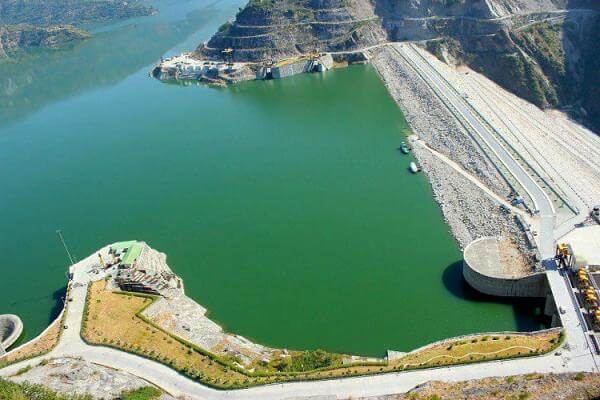
Its construction was started in 1978 and it was completed in 2006. It was built to generate electricity, to control flood, and to provide water for irrigation and drinking purposes. The total storage capacity of the water reservoir of this dam is 3540 Mm3. It has two gate-controlled spillways that can eject water at the rate of 15,540 cubic meters per second. It distributes electricity to various north Indian states such as Uttar Pradesh, Haryana, Punjab, Rajasthan, Himachal Pradesh, and Jammu & Kashmir. The Tehri Hydro Development Corporation India Limited, which was incorporated in 1988, is responsible for the operation, management and maintenance of the Tehri Dam. 2) Chamera Dam, Himachal PradeshChamera Dam is an earthen dam that is constructed over the river Ravi as a hydroelectricity project in the region. It is located near Dalhousie at Chamba district in Himachal Pradesh. The construction of this dam solved the issues of water and electricity shortage. Its construction started in 1985 and completed in 1994. It stands at a height of 226 meters with a length of 295 meters. 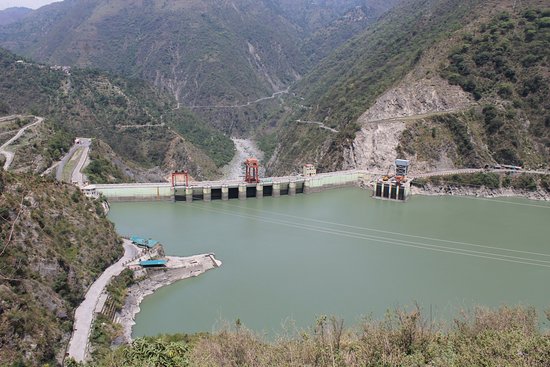
Around 1000 people have to be displaced to construct this dam. However, many rehabilitation plans were introduced and compensation was given to the homeless people. Even free education and medical facilities were given to the people. The water reservoir created by this dam is known as Chamera Lake. It is a famous tourist spot as the lake offers various water sports activities such as rowing, paddle boating, sailing, motor boating, etc. Besides this, house boats and shikara are also available in the lake. Lots of tourists come here to spend some quality time. 3) Bhakra Nangal Dam, Himachal PradeshBhakra Nangal Dam is built across the Sutlej River in the state of Himachal Pradesh. It is a concrete gravity type of dam that stands at a height of 225 meters with a length of 520 meters. 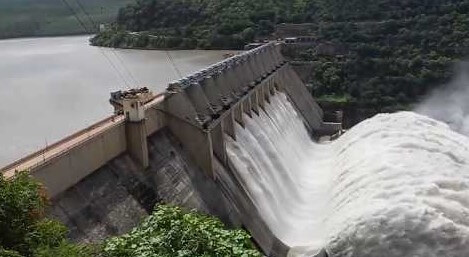
The water reservoir formed behind this dam is called 'Gobind Sagar Lake' and is the second largest water reservoir in India. It is named after the tenth guru of Sikhs, Guru Gobind Singh and can store up to 9.34 billion cubic meters water. The length of this reservoir is 88 km and breath is 8 km. The construction of Bhakra Nangal Dam was started in 1948 and was completed in 1963. It is a multipurpose dam that is used for irrigation, to store rainwater, and to generate and provide electricity to the states of Rajasthan, Himachal Pradesh, Gujarat, and Haryana. Besides this, it is also a famous tourist attraction. The tourist can enjoy various water sports at Gobind Sagar Lake. Bhakra Beas Management Board is responsible for the management and administration of the Bhakra Nangal project. 4) Idukki Dam, KeralaIdukki dam is a concrete double, curvature parabolic and thin arch dam that is built over Periyar River. It is located between two mountains; Kuravanmala and Kurathimala in the state of Kerala. Idukki dam is built and owned by the Kerala State Electricity Board. However, the Govt. of Canada provided the required support to build this dam. 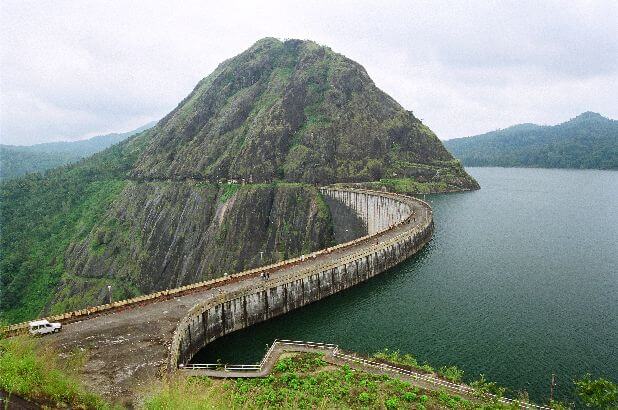
It is one of the highest arch dams in Asia that stands at a height of 167.7 meters and was built along with two other dams located at Kulamavu and Cheruthoni. Idukki dam along with these two dams forms a water reservoir or artificial Lake 60 sq. km. in area. The water of the reservoir is used to generate electricity at its underground Moolamattom Power house that comprises six pelton-type turbines each with a power generating capacity of 130 MW. So, its total installed capacity is 780 MW. Apart from supplying electricity, it also provides water for irrigation in Muvattupuzha Valley. The dam is also visited by tourists as it is surrounded by beautiful valleys and streams. 5) Koldam Dam, BilaspurKoldam dam is an embankment dam built over Satluj River at a distance of 18 km from Bilaspur, Himachal Pradesh. The foundation of Koldam dam was laid by Atal Bihari Vajpayee in June 2000. It was built to generated electricity by the National Thermal Power Corporation (NTPC). Around 45 billion rupees are invested in this project. The height of the dam is 167 meters with a crest length of 474 meters and a crest width of 14 meters. The holding of water in the reservoir started in December 2003. 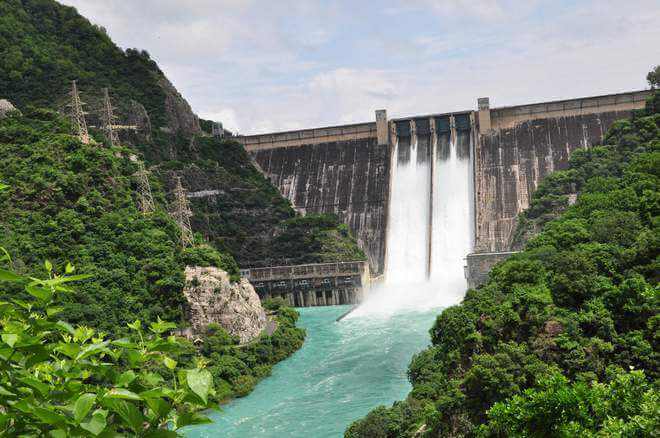
The construction of Koldam was started in 2004. The installed capacity of a hydropower plant is 800 MW. It took around 15 years to complete the construction of this dam due to environmental and habitat issues. Koldam dam is full of natural beauty that makes it a popular tourist spot that attracts a large number of tourists from different parts of the country. 6) Ranjit Sagar Dam, PunjabThe Ranjit Sagar Dam is also known as the Thein Dam. It is an earth-fill dam, which is a part of the hydroelectric project of the Govt. of Punjab Irrigation Department, which was built on the River Ravi at the border of Punjab and Jammu and Kashmir states of India. 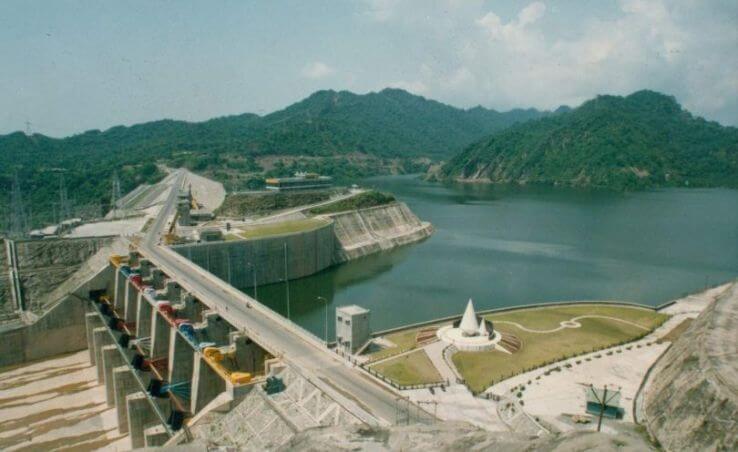
The height of Ranjit Sagar Dam is 160 meters and the capacity of the water reservoir formed by the dam is 32 billion cubic meter. 60% of this reservoir lies in the Jammu and Kashmir, whereas, the remaining 40% is in the Pathankot. The construction of Ranjit Sagar Dam was stated in 1981 and completed in 2001. It used for generating electricity as well as to supply water for irrigation. It has four power generating units of 150 MW each so the total installed capacity is 600 MW. It is also a popular tourist spot in this region as it is located amidst scenic surroundings and allows the tourist to see the flow of water from a safe distance. People from the city and nearby places come here throughout the year. 7) Srisailam Dam, Andhra PradeshSrisailam Dam is constructed over the Krishna River and is located in the Kurnool district in Andhra Pradesh at a distance of 13 km from the Srisailam town. It is situated amidst the scenic Nallamala Hills. It has 12 radial gates. Its height is 145 meters, the length is 512 meters. 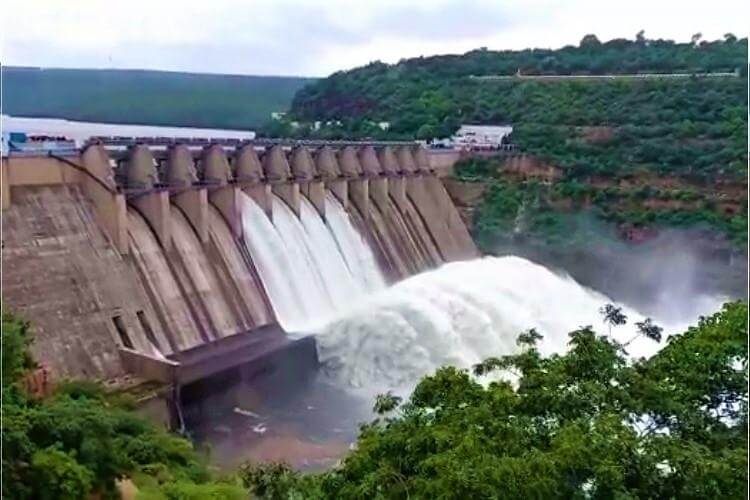
The construction of the Srisailam dam began in 1960 as a power project. Later, it was completed as a multipurpose dam in July 1981. The second stage of the dam completed in 1987 after that it became a multi-purpose project and its capacity was increased by an additional 770 MW. Besides electricity, it also provides water to the nearby areas of around 2000 sq. km. The water reservoir formed by this dam spreads over 616 sq. km. It can hold around 178 Tmcft of water. On the left side, it has six 150 MW reversible Francis pump-turbine and on the right side, it has seven 110 MW Francis turbine generators. It is also a popular tourist spot. People come here to spend quality time with their family or friends. From the top of the dam, you can get a mesmerizing view of the surroundings and the water when it is released from the dam. 8) Cheruthoni Dam, KeralaCheruthoni Dam is a concrete gravity dam located at Idukki district in Kerala. It is built over Cheruthoni River and is situated close to Idukki arch dam in the state of Kerala. It stands at a height of 138 meters and its length is 650 meters. It was built as part of the Idukki Hydroelectric Project and with the support of Canada. The Idukki and Kulamavu dams are also part of this project. The water reservoir formed by these dams spread over 60 sq. km. This project uses water to generate electricity that is supplied to the nearby areas. 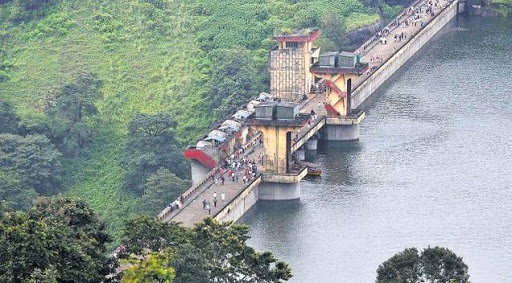
The dam is under the control of the Kerala State Electricity Board. It is opened to the public during the Onam festival. It is a popular tourist attraction in Idukki. It offers mesmerizing view of green hills, Cheruthoni River and flora and fauna. A two-hour cruise ride is also available for the tourists between Idukki and Kulamavu. 9) Nagarjuna Sagar Dam, TelanganaNagarjuna Sagar Dam is a masonry type of dam built over the Krishna River and is located in Nalgonda district in the state of Telangana. It is one of the first multipurpose large infrastructure projects in India for generating hydroelectricity. 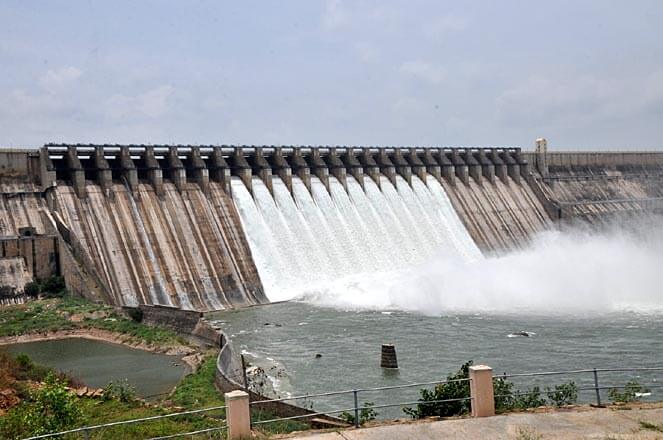
It is believed to be the largest masonry dam that has 26 crest gates and stands at a height of 124 meters with a length of around 4800 metres. Its construction was completed in 1969 The dam provides water to various nearby districts such as Krishna, Suryapet, West Godavari, Prakasam, and Guntur. The water reservoir created by this dam has a total capacity of 11 billion cubic metres. It is counted among the largest man-made lakes in the world. It is surrounded by gardens that make it an ideal picnic spot with the facility of boating rides. It is also a popular weekend gateway for the people of nearby cities. Besides this, Nagarjunakonda Island is also located nearby the dam. 10) Sardar Sarovar Dam, GujaratSardar Sarovar Dam is a concrete gravity dam that is built over the Narmada River. It is situated at Kevadia village in Gujarat. It is one of the largest and multipurpose river valley infrastructure development projects in India. 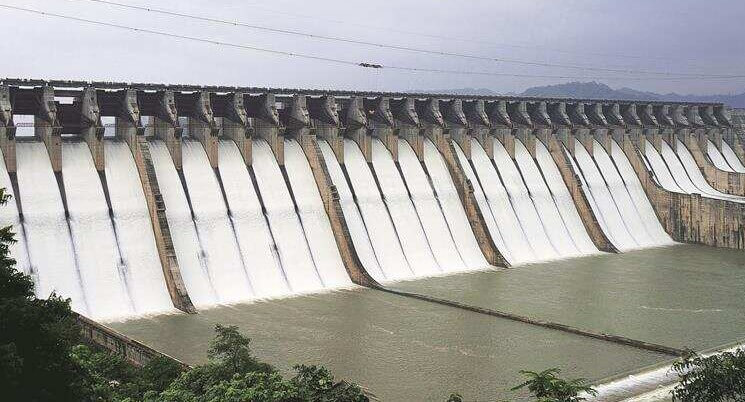
The height of Sardar Sarovar Dam is 121 meters, however, the proposed final height is 163 meters. Its length is 1210 metres. Around 7 million cubic metres of concrete was used for building this dam. Sardar Sarovar Dam's foundation was laid on 5 April 1961 by the then Indian Prime Minister Jawaharlal Nehru. It took 56 years to construct this dam and it was inaugurated by the then Indian Prime Minister Narendra Modi on 17 September 2017. The water reservoir formed behind the dam is named Sardar Sarovar reservoir. Its total capacity is 0.95 million hectare metre. It has two power generation units with a combined capacity of 1450 MW. The dam is not only used to generate electricity but also provides water for drinking and irrigation. It supplies water and electricity to the Indian states of Madhya Pradesh, Gujarat, Rajasthan and Gujarat. 11) Salal Dam, Jammu & KashmirSalal Dam is constructed on the Chenab River in the union territory of Jammu and Kashmir. It is a hydropower project which is also known as Salal Hydroelectric Power Station. It is the first hydropower project built by govt. of India under the Indus Water Treaty in Jammu and Kashmir. Its construction was completed in 1987. 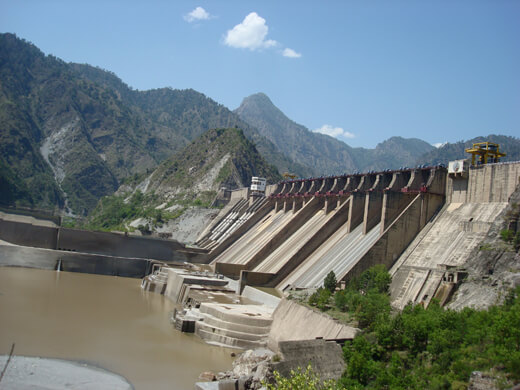
Its construction started in 1970 and completed in 1987. The height of Salal Dam is 113 meters and its length is 487 meters. It has 12 gates or spillways to release the water. It can release 22427 cubic meters of water per second. The total installed capacity of this hydropower station after completing the stage I and stage II is 690 MW. 12) Koyna Dam, MaharashtraKoyna Dam is a rubble-concrete dam that is built over the Koyna River and is located at Koyna Nagar in the district of Satara in the state of Maharashtra. Its height is 103 meters, and length is 807 meters. The reservoir made by the dam can store up to 105 TMC (thousand million cubic feet) of water. 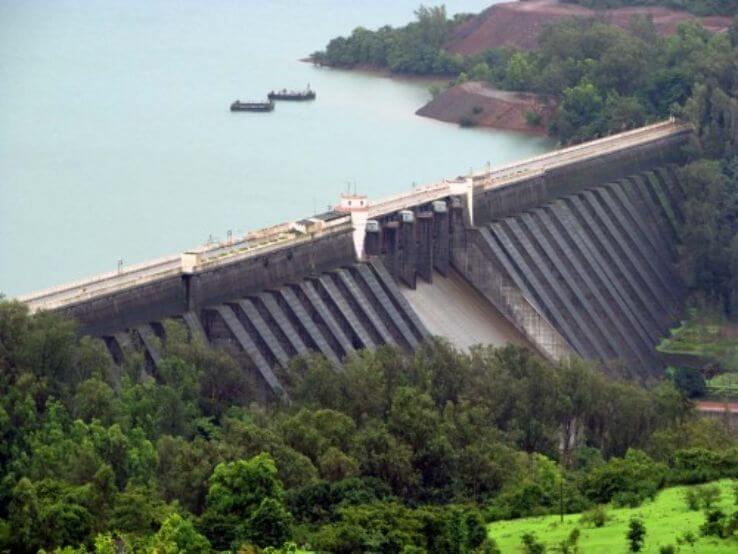
The main purpose of constructing this dam was to generate hydroelectricity, however, it also supplies water for irrigation in the nearby areas. Its total installed capacity is 1960 MW. It is also used to control flood in the season of monsoon. The Koya hydro-electric project works under the control of the Maharashtra State Electricity Board. Koyna dam is a strong dam with six radial gates. It was able to withstand many earthquakes in the past such as the 1967 Koynanagar earthquake that caused some cracks in the dam. These cracks were filled with grouting. The tourists are required to take permission to visit this dam. After taking permission, tourists are taken to the dam by a boat. You can spend time by the Koyna dam watching sunrise, sunset and can also visit the Nehru Park located adjacent to it. You can also see the huge entrance gates of the dam from a cruise. 13) Indira Sagar Dam, Madhya PradeshIndira Sagar Dam is a gravity concrete dam built over the Narmada River in the Khandwa district of Madhya Pradesh, India. The height of the dam is 92 metres and its length is 653 meters. The founding stone for Indira Sagar Dam was laid down by former Prime Minister of India Indira Gandhi on 23 October 1984. However, its construction was started in 1992 and it was completed in 2003 and started working in May 2005. Around 100 villages and a town with a population of 22,000 people were displaced to construct this dam. 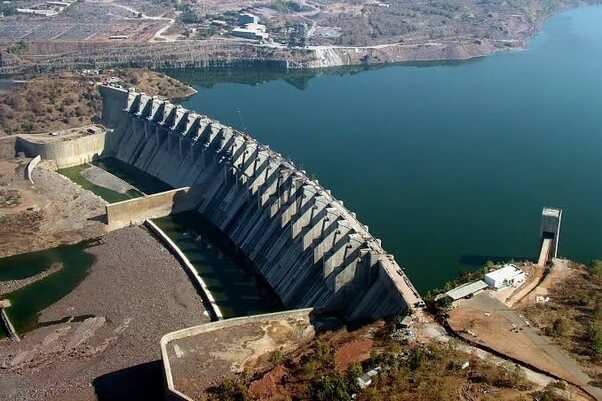
The dam was constructed with the combined efforts or as a joint venture between Madhya Pradesh Irrigation and National Hydroelectric Power Corporation. The water reservoir of Indira Sagar Dam has a holding capacity of 12 billion cu. m. This site is also one of the major tourist attractions in the Khandwa district. The backwater of the dam forms a beautiful lake which is developed as a tourist site that offers the facility of accommodation, restaurant, boating and cruise ride on backwater. The area is also good for watching birds and mammals. 14) Rihand Dam, Uttar PradeshRihand Dam is a concrete gravity dam situated at Pipri in Sonbhadra district in Uttar Pradesh, India. It is built over Rihand River, which is a tributary of the Son River. The water reservoir formed by this dam is also known as Govind Ballabh Pant Reservoir and it is spread over 130 sq. km. It shares boundaries with Uttar Pradesh and Madhya Pradesh. Around, 1 lakh people were relocated to construct this dam. Its catchment area spreads over Madhya Pradesh, Chhattisgarh and Uttar Pradesh. 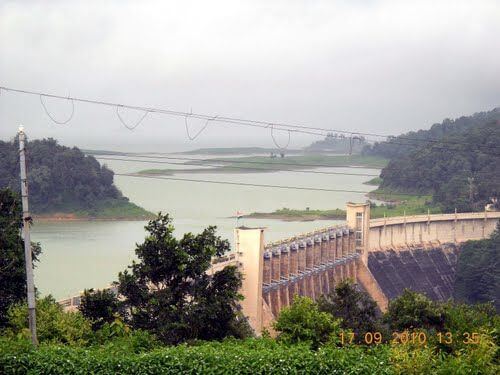
The height of Rihand dam is 91 metres and its length is 934 metres. Its construction was started in 1954 and completed in 1962. It was inaugurated by Jawaharlal Nehru in 1964. It comprises 61 blocks and ground joints. The intake point of water is located between 28 and 33 blocks. The hydroelectric powerhouse of the dam has a total installed capacity of 300 MW. It is managed by the UP Hydroelectricity Corporation Ltd. There is a sharp growth in the industries in this area after the established of Rihand dam. The dam is provided with a spill-way of 190 meters that is used to control the floods in the area. There is also a waterfall named Rakasganda created by Rihand River. So, it is also a popular tourist spot. 15) Mettur Dam, Tamil NaduMettur Dam is built over the Kaveri River. It is located 30 miles far from Salem in the village of Mettur in the state of Tamil Nadu. The height of Mettur Dam is 214 feet, width is 171 feet and total length is 1700 meters. It is situated amidst verdant hills and natural beauty that make it a popular tourist attraction. Tourist from different parts of the world come here to relax and unwind. 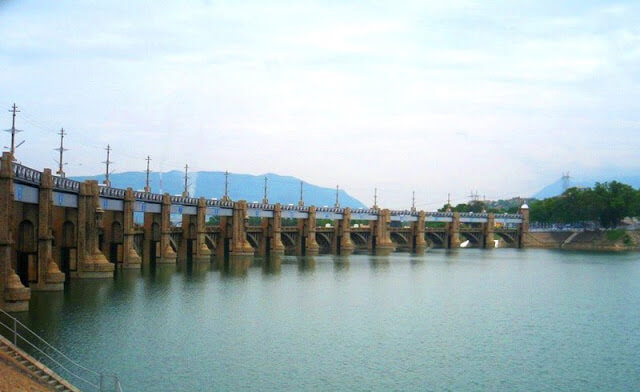
The dam is known for its design that shows the engineering skills of the country. It was constructed in 1934 and it took around nine years to complete its construction. The dam forms Stanely Reservoir and also receives water from two other dams named Kabini Dam and Krishna Raja Sagara Dam present in the state of Karnataka. It has two hydroelectric power stations out of which one was built during the colonial rule and second was built after India got independence. It not only produces electricity but also provides water for irrigation for around 2.7 lakh acres of agricultural land nearby its premises. 16) Hirakud Dam, OrissaHirakud Dam is one of the longest earthen dams in the world. It is a composite structure of the earth, concrete and stonework and was built over the Mahanadi River at a distance of 15 km from Sambalpur in Orissa. It was constructed between 1948 and 1956 as National Project thereafter it was transferred to the Govt. of Odhisa in 1963. 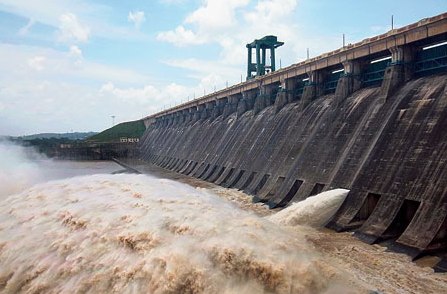
The height of the dam is 61 meters and its length is 26 km. It is India's first multipurpose river valley project after the independence. It has 98 flood gates, over 60 sliding gates and 34 crest gates to release the water. Central Board of Irrigation & Power awarded the Hirakud Dam as the best-maintained project. The dam creates a huge artificial lake in Asia with a water holding capacity of 743 km2. Besides this, two observation towers are also built for observation purposes. One tower is named 'Gandhi Minar' and the second tower is named 'Nehru Minar'. Both the towers offer a mesmerizing view of the lake and dam. This place is also home to various bird species like red-crested pochards, great crested grebes, common pochards, etc. It is also a famous tourist attraction as it has beautiful surroundings and a huge artificial lake where tourist can enjoy boating. 17) Uri Dam, Jammu & KashmirUri Dam is a concrete gravity type of dam that is constructed over the Jhelum River near Uri at Baramulla in the Union Territory of Jammu and Kashmir, India. It is a 480 MW hydroelectric power station. Uri dam is located very close to the Line of Control between India and Pakistan. It is mostly built under a hill with a tunnel of length around 10 km. The cost of the project was Rs 33 billion and it was completed in 1997. 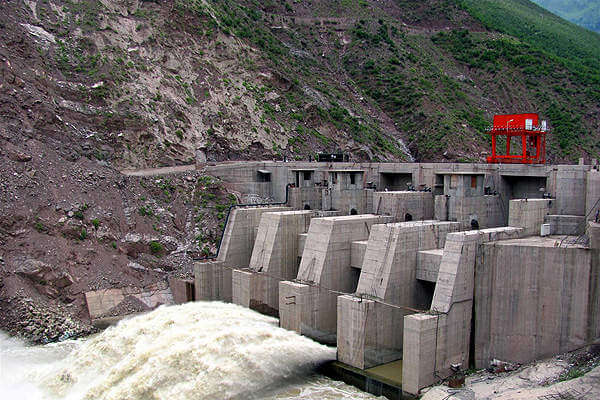
The total installed capacity of this project is 240 MW. The height of the Uri dam is 52 meters and its length is 157 meters. It has four spillway gates. This project was partially funded by the British and Swedish governments. Around 200 foreigners and 4000 Indian workers were involved in the construction of this dam. 18) Bisalpur Dam, RajasthanBisalpur is a gravity dam that is built over the Banas River at Tonk District in Rajasthan, India. It was built in the 1990s by the govt. of Rajasthan. The water reservoir formed by the dam provides irrigation water to Tonk, Sawai Madhopur, Ajmer and Jaipur districts. It occupies an area of 218 sq. km. and its total capacity is 110 crores cubic meters. 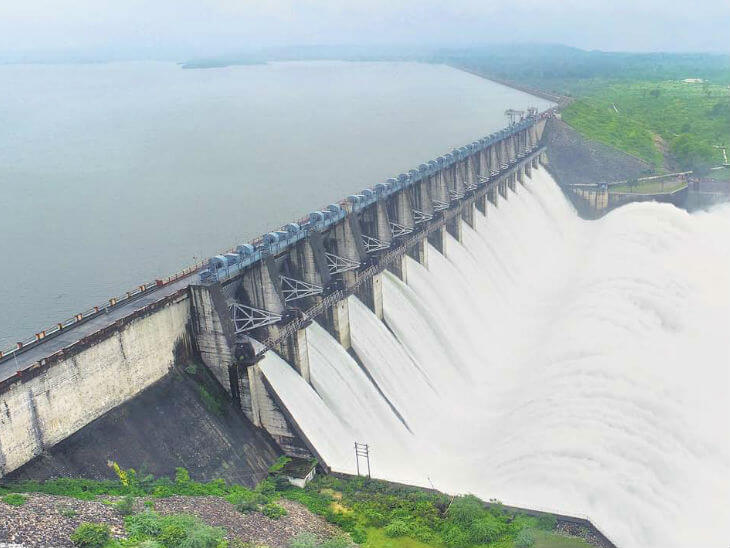
The height of Bisalpur dam is 40 meters and its length is 574 meters. It was built in two phases. In this first phase, it focused on providing water to the villages and the second stage was built to improve the irrigation facilities. In 2016, the water of the reservoir was used to fill Pushkar Lake during the annual Pushkar Fair. The dam attracts lots of local and migratory bird species. Furthermore, the govt. of Rajasthan also organizes events or festivals at this place to attract visitors. 19) Krishna Raja Sagara Dam, KarnatakaKrishna Raja Sagara Dam (KRS Dam) is a gravity dam of stone masonry built over the Kaveri River at Mandya district in Karnataka. It stands at a height of 39 metres or 130 ft. with a length of 8597 ft. and is named after Krishnaraja Wodeyar IV, a former ruler of Mysore Kingdom. Its construction was started in 1925 and it was opened in 1932. The famous engineer Sir. M. Visvesvaraya had designed this dam and played a major role in its construction. 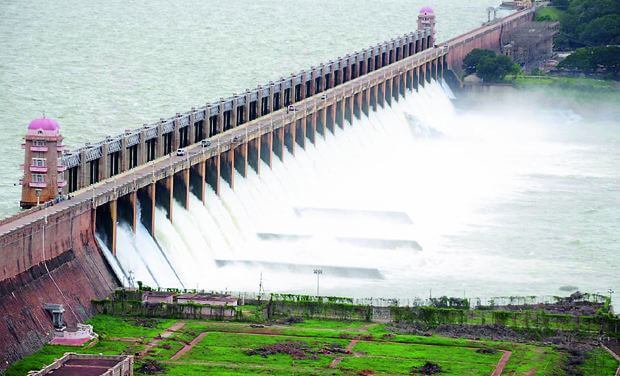
Krishna Raja Sagara is believed to be the first irrigation dam in India. It can hold a total of 136 crore cubic meters of water and has 18 gates to release water. It is the main source of drinking water for the Mysore, Mandya and Bangalore cities. KRS dam is also a famous tourist attraction. It creates a beautiful lake behind it that is named Krishna Raja Sagara. It also has a beautiful garden named Brindavan Garden. This site is visited by a large number of tourists each year. 20) Gangrel Dam, ChhattisgarhGangrel dam is constructed across the Mahanadi River. It is also known as Ravishankar dam and is located in the district of Dhamtari in Chhattisgarh. It is the longest dam in the state of Chhattisgarh. The Gangrel Hydel Power Project of 10 MV installed capacity is developed at this dam. The height of Gangrel dam is 30 meters and its length is 1830 metres. 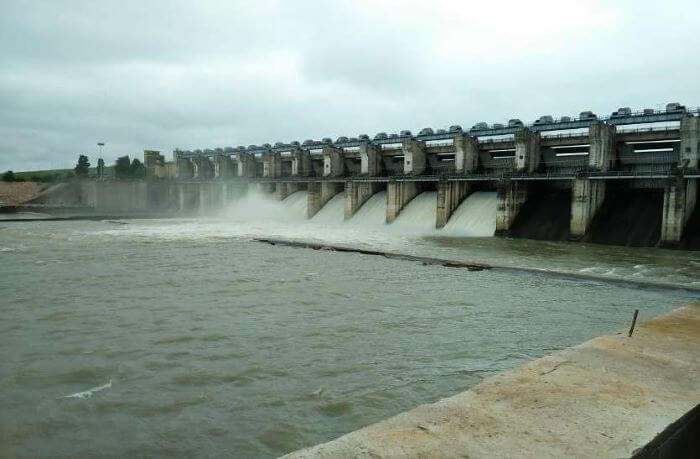
The Gangrel dam provides water for irrigation purposes throughout the year which enable farmers grow and harvest two crops in a year. Besides irrigation water, it also generates electricity and provides electricity to the nearby regions and cities. It also provides water to Bhilai Steel Plant. The dam has 14 spillways or gates to release the water. Mr. Dev raj Sikka was the chief engineer of Gangrel dam project. Furthermore, the reservoir formed behind the dam offers lots of water sports and activities for the visitors.
Next TopicGreen Revolution in India
|
 For Videos Join Our Youtube Channel: Join Now
For Videos Join Our Youtube Channel: Join Now
Feedback
- Send your Feedback to [email protected]
Help Others, Please Share










